- europages
- >
- COMPANIES - SUPPLIERS - SERVICE PROVIDERS
- >
- extruded profiles
Results for
Extruded profiles - Import export

ROLLON GMBH
Germany
Uniline System is a family of pre-assembled linear units boasting a compact size and high speed ensured by the COMPACT RAIL roller bearings, mounted on a self-sustaining extruded aluminum profile. The linear units are driven by a steel reinforced polyurethane belt system. The horizontal seals and the raceway cleaners fitted on both ends of the carriage ensure full protection from dirt. The linear actuator profile is compatible with an endless number of widely available standard fixing accessories. The motor can be connected to the units by means of a full or a hollow shaft Up to 3,000mm strokes Sizes from 40 x 51.5mm up to 100 x 122.5mm Versions available with long sliders and multiple sliders Using linear rails from the COMPACT RAIL family ensures excellent performance in terms of speed and life. The rails in the linear axes of the four product series are laid out in different combinations to meet all application requirements. Using long or multiple sliders increases the...
Request for a quote
ALUMINIUMWERK UNNA AG
Germany
In the aluminium industry, the porthole extrusion process is the standard method for the production of extruded tubes and profiles. The process is limited to a number of aluminium alloys. However, most of the commercially available medium strength aluminium alloys such as EN AW-6060 or EN AW-6082 can be extruded by porthole extrusion.
Request for a quote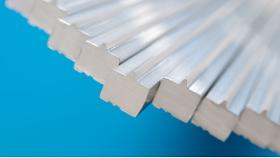
ALUMINIUMWERK UNNA AG
Germany
With the unique extrusion process, ALUnna has the capability to produce continuous lengths of extruded profiles. Unlike the conventional extrusion process, the continuous extrusion process does not use billets. Instead, raw material is fed into the process from a coil. This process is especially useful for the production of small extrusion profiles used as spacer bars in alloys EN AW-1050A / 1350A or EN AW-3103/3003. If necessary, there is an option to apply a draw pass to the spacer bar profile using an in-line Schumag continuous drawing machine in order to achieve the final dimension and the most demanding of tolerances.
Request for a quote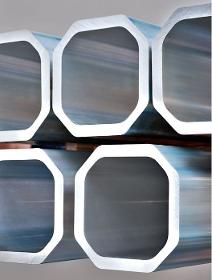
ALUMINIUMWERK UNNA AG
Germany
Not all extruded profiles are required to be circular in shape! Whether it is a seamless or porthole hollow-profile, at ALUnna, we have a multitude of possibilities. Simple profiles, such as a solid profile or an angle profile, are also available. On some profiles we may have the possibility to further improve the dimensional tolerances by adding a subsequent drawing step to achieve final dimensions. In addition to round tube, shaped, square or rectangular tubes in both medium strength and high-strength alloys can be produced.
Request for a quote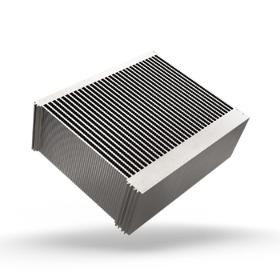
SEIFERT ELECTRONIC GMBH
Germany
High-performance heat sinks from Seifert electronic are exclusively designed for forced cooling applications. The powerful heat sinks from the Vario and DKL series impress with their large cooling surfaces. Utilizing a finned construction, rib spacing can be manufactured that is not achievable with conventional extruded profiles. Thanks to maximized surface area with the same weight, a high-performance heat sink delivers above-average cooling performance per unit volume. We have patented our proprietary compression geometry at Seifert electronic. In this process, individual fins are precisely cold-pressed into a heat sink without the use of adhesives. Heat conduction in the finned heat sinks occurs directly from the base to the fins, without any thermal transition as seen with pressed-in ribs into a solid base. Custom mounting holes can be incorporated into the pressed, surface-milled base.
Request for a quote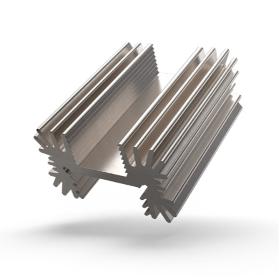
SEIFERT ELECTRONIC GMBH
Germany
Maximum heat dissipation using PC board heat sinks in minimal board space. Seifert electronic GmbH offers custom heat sinks for use in the board area – precisely measured and flexibly adapted to your requirements. The wide standard range of Seifert electronic includes PC heat sinks in all common designs. We provide various heat sink models such as snap-on heat sinks made of strip material, extruded heat sinks, die-cast heat sinks, as well as finger heat sinks and U-shaped heat sinks, along with the corresponding accessories like mounting clips for fastening. Extruded profile heat sinks are considered classics among PC board heat sinks. We gladly recommend them for use in the board area as they are versatile and can dissipate relatively large amounts of heat.
Request for a quote
TWK-ELEKTRONIK GMBH
Germany
The displacement transducers operate according to the principle of run time measurement between two points of a magnetostrictive waveguide. One point is determined by a moveable position magnet, whose distance from the null point corresponds to the section to be measured. The run time of an emitted impulse is directly proportionate to this section. Conversion to a measuring signal takes place in the downstream electronics. The waveguide is housed in a pressure-resistant stainless steel tube or extruded profile. To the rear of this is a die-cast aluminium housing containing the electronics in SMD technology. In the rod version, the position magnet is located in a ring, which is guided over the rod without contact. In the profile version, it is located either in a slider, which is linked to the moving part of the machine via a ball joint, or it moves as a liftable position magnet, without wear, over the profile.
Request for a quote
TWK-ELEKTRONIK GMBH
Germany
The displacement transducers operate according to the principle of run time measurement between two points of a magnetostrictive waveguide. One point is determined by a moveable position magnet, whose distance from the null point corresponds to the section to be measured. The run time of an emitted impulse is directly proportionate to this section. Conversion to an analogue measuring signal takes place in the downstream electronics. The waveguide is housed in a pressure-resistant stainless steel tube or extruded profile. To the rear of this is a die-cast aluminium housing containing the electronics in SMD technology. Electrical connection is implemented via a circular connector. In the rod version, the position magnet is located in a ring, which is guided over the rod without contact. In the profile version, it is located either in a slider, which is linked to the moving part of the machine via a ball joint, or it moves as a liftable position magnet, without wear, over the profile.
Request for a quote
TWK-ELEKTRONIK GMBH
Germany
The displacement transducers operate according to the principle of run time measurement between two points of a magnetostrictive waveguide. One point is determined by a moveable position ring, whose distance from the null point corresponds to the section to be measured. The run time of an emitted impulse is directly proportionate to this section. Conversion to a displacement signal takes place in the downstream electronics. The waveguide is housed in a pressure-resistant stainless steel tube or extruded profile. To the rear of this is a die-cast aluminium housing containing the electronics in SMD technology. In the rod version, the position magnet is located in a ring, which is guided over the rod without contact. In the profile version, it is located either in a slider, which is linked to the moving part of the machine via a ball joint, or it moves as a liftable position magnet, without wear, over the profile.
Request for a quote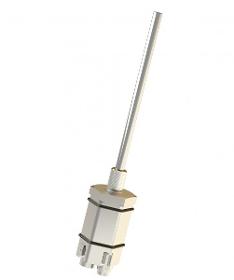
TWK-ELEKTRONIK GMBH
Germany
The displacement transducers operate according to the principle of run time measurement between two points of a magnetostrictive waveguide. One point is determined by a moveable position magnet, whose distance from the null point corresponds to the section to be measured. The run time of an emitted impulse is directly proportionate to this section. Conversion to a digital measuring signal takes place in the downstream electronics. The waveguide is housed in a pressure-resistant stainless steel tube or extruded profile. To the rear of this is a die-cast aluminium housing containing the electronics in SMD technology. In the rod version, the position magnet is located in a ring, which is guided over the rod without contact. In the profile version, it is located either in a slider, which is linked to the moving part of the machine via a ball joint, or it moves as a liftable position magnet, without wear, over the profile.
Request for a quote
TWK-ELEKTRONIK GMBH
Germany
The displacement transducers operate according to the principle of run time measurement between two points of a magnetostrictive waveguide. One point is determined by a moveable position magnet, whose distance from the null point corresponds to the section to be measured. The run time of an emitted impulse is directly proportionate to this section. Conversion to an analogue measuring signal takes place in the downstream electronics. The waveguide is housed in an extruded aluminium profile. The electronics is housed in a die-cast aluminium sensor head. Electrical connection is implemented via a circular connector. The position magnet is located either in a slider, which is linked to the moving part of the machine via a ball joint, or it moves as a liftable position magnet, without wear, over the profile.
Request for a quote
TWK-ELEKTRONIK GMBH
Germany
The displacement transducers operate according to the principle of run time measurement between two points of a magnetostrictive waveguide. One point is determined by a moveable position magnet, whose distance from the null point corresponds to the section to be measured. The run time of an emitted impulse is directly proportionate to this section. Conversion to a digital measuring signal takes place in the downstream electronics. The waveguide is housed in a pressure-resistant stainless steel tube or extruded profile. To the rear of this is a die-cast aluminium housing containing the electronics in SMD technology. In the rod version, the position magnet is located in a ring, which is guided over the rod without contact. In the profile version, it is located either in a slider, which is linked to the moving part of the machine via a ball joint, or it moves as a liftable position magnet, without wear, over the profile.
Request for a quote
TWK-ELEKTRONIK GMBH
Germany
The displacement transducers operate according to the principle of run time measurement between two points of a magnetostrictive waveguide. One point is determined by a moveable position ring, whose distance from the null point corresponds to the section to be measured. The run time of an emitted impulse is directly proportionate to this section. Conversion to a displacement signal takes place in the downstream electronics. The waveguide is housed in a pressure-resistant stainless steel tube or extruded profile. To the rear of this is a die-cast aluminium housing containing the electronics in SMD technology. In the rod version, the position magnet is located in a ring, which is guided over the rod without contact. In the profile version, it is located either in a slider, which is linked to the moving part of the machine via a ball joint, or it moves as a liftable position magnet, without wear, over the profile.
Request for a quote
TWK-ELEKTRONIK GMBH
Germany
The displacement transducers operate according to the principle of run time measurement between two points of a magnetostrictive waveguide. One point is determined by a moveable position magnet, whose distance from the null point corresponds to the section to be measured. The run time of an emitted impulse is directly proportionate to this section. Conversion to an analogue measuring signal takes place in the downstream electronics. The waveguide is housed in a pressure-resistant stainless steel tube or extruded profile. To the rear of this is a die-cast aluminium housing containing the electronics in SMD technology. Electrical connection is implemented via a circular connector. In the rod version, the position magnet is located in a ring, which is guided over the rod without contact. In the profile version, it is located either in a slider, which is linked to the moving part of the machine via a ball joint, or it moves as a liftable position magnet, without wear, over the profile.
Request for a quote
TWK-ELEKTRONIK GMBH
Germany
The displacement transducers operate according to the principle of run time measurement between two points of a magnetostrictive waveguide. One point is determined by a moveable position magnet, whose distance from the null point corresponds to the section to be measured. The run time of an emitted impulse is directly proportionate to this section. Conversion to a measuring signal takes place in the downstream electronics. The waveguide is housed in a pressure-resistant stainless steel tube or extruded profile. To the rear of this is a die-cast aluminium housing containing the electronics in SMD technology. In the rod version, the position magnet is located in a ring, which is guided over the rod without contact. In the profile version, it is located either in a slider, which is linked to the moving part of the machine via a ball joint, or it moves as a liftable position magnet, without wear, over the profile.
Request for a quote
TWK-ELEKTRONIK GMBH
Germany
The displacement transducers operate according to the principle of run time measurement between two points of a magnetostrictive waveguide. One point is determined by a moveable position magnet, whose distance from the null point corresponds to the section to be measured. The run time of an emitted impulse is directly proportionate to this section. Conversion to a digital measuring signal takes place in the downstream electronics. The waveguide is housed in a pressure-resistant stainless steel tube or extruded profile. To the rear of this is a die-cast aluminium housing containing the electronics in SMD technology. Electrical connection is implemented via a circular connector. In the rod version, the position magnet is located in a ring, which is guided over the rod without contact. In the profile version, it is located either in a slider, which is linked to the moving part of the machine via a ball joint, or it moves as a liftable position magnet, without wear, over the profile
Request for a quote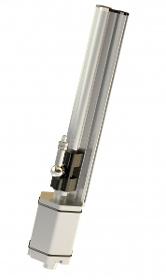
TWK-ELEKTRONIK GMBH
Germany
The displacement transducers operate according to the principle of run time measurement between two points of a magnetostrictive waveguide. One point is determined by a moveable position magnet, whose distance from the null point corresponds to the section to be measured. The run time of an emitted impulse is directly proportionate to this section. Conversion to a digital measuring signal takes place in the downstream electronics. The waveguide is housed in a pressure-resistant stainless steel tube or extruded profile. To the rear of this is a die-cast aluminium housing containing the electronics in SMD technology. Electrical connection is implemented via a circular connector. In the rod version, the position magnet is located in a ring, which is guided over the rod without contact. In the profile version, it is located either in a slider, which is linked to the moving part of the machine via a ball joint, or it moves as a liftable position magnet, without wear, over the profile.
Request for a quoteDo you sell or make similar products?
Sign up to europages and have your products listed
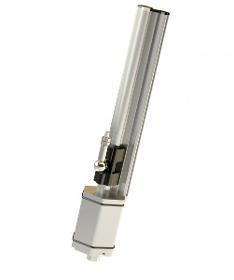
TWK-ELEKTRONIK GMBH
Germany
The displacement transducers operate according to the principle of run time measurement between two points of a magnetostrictive waveguide. One point is determined by a moveable position magnet, whose distance from the null point corresponds to the section to be measured. The run time of an emitted impulse is directly proportionate to this section. Conversion to an analogue measuring signal takes place in the downstream electronics. The waveguide is housed in a pressure-resistant stainless steel tube or extruded profile. To the rear of this is a die-cast aluminium housing containing the electronics in SMD technology. Electrical connection is implemented via a circular connector. In the rod version, the position magnet is located in a ring, which is guided over the rod without contact. In the profile version, it is located either in a slider, which is linked to the moving part of the machine via a ball joint, or it moves as a liftable position magnet, without wear, over the profile.
Request for a quoteResults for
Extruded profiles - Import exportNumber of results
19 ProductsCompany type